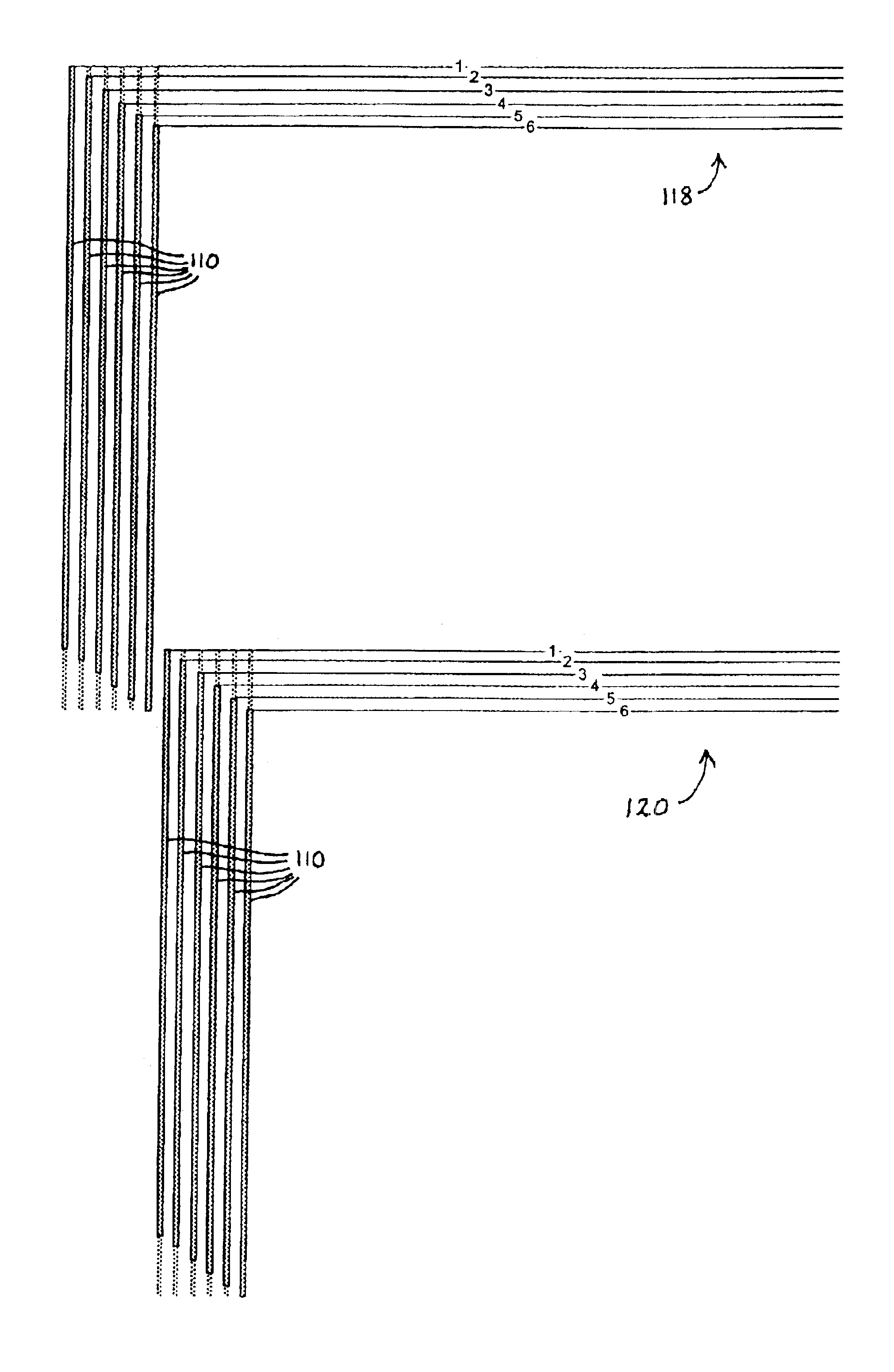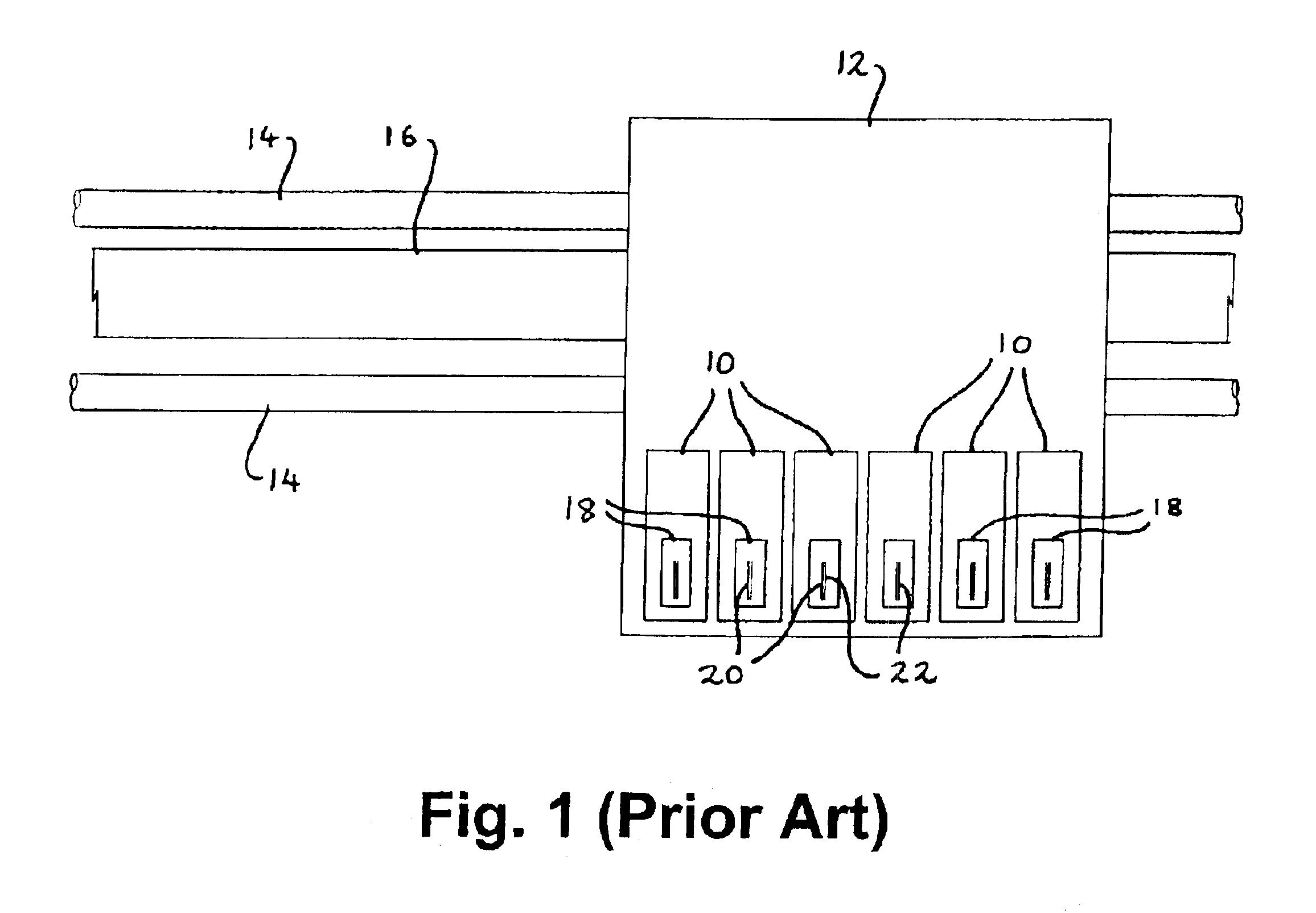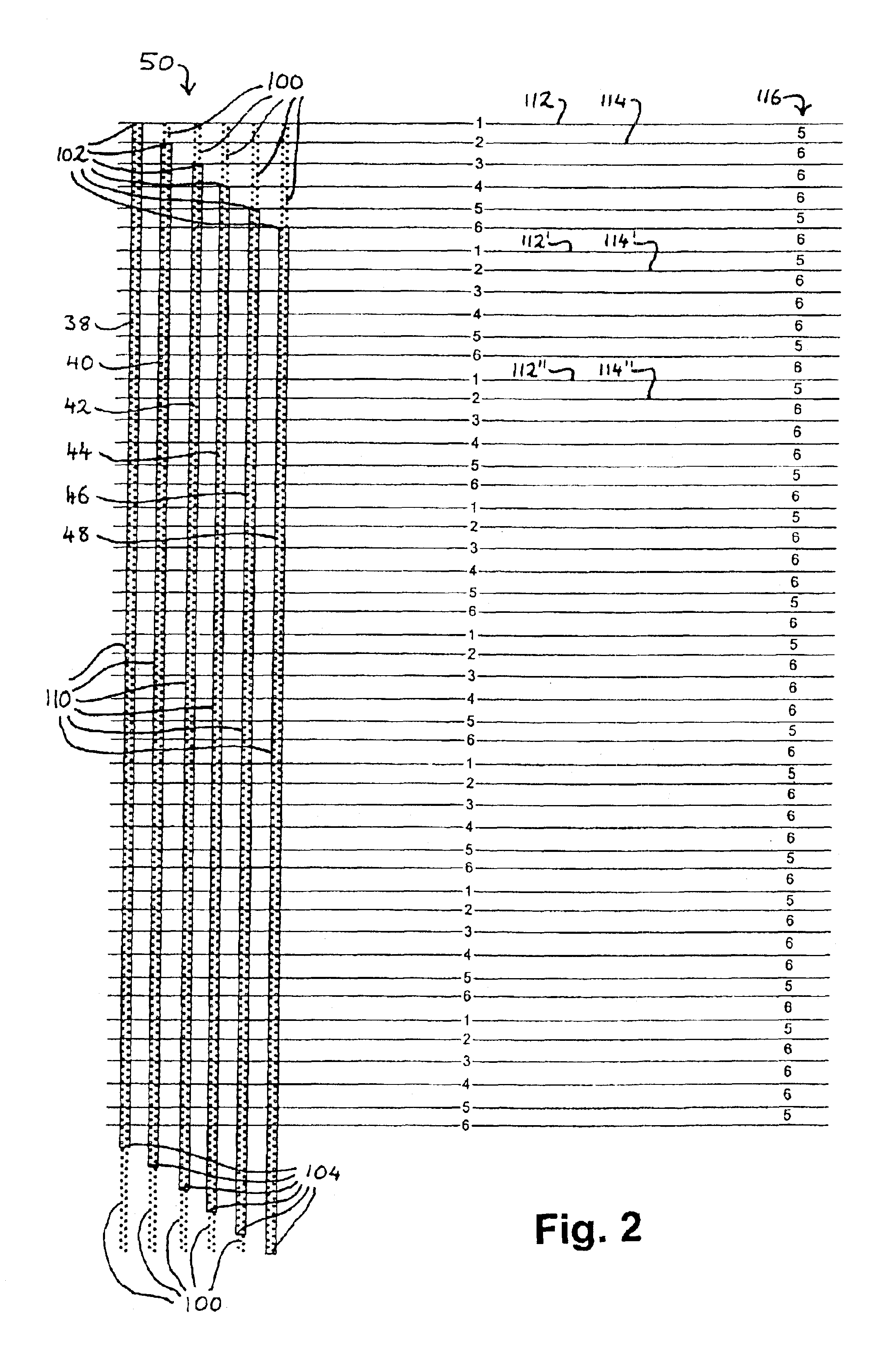Banding reduction in incremental printing
a technology of incremental printing and banding, applied in the field of printing, can solve the problems of reducing the noticeability of the human eye, and achieve the effects of reducing the banding effect, reducing the cost of implementation, and reducing the speed
- Summary
- Abstract
- Description
- Claims
- Application Information
AI Technical Summary
Benefits of technology
Problems solved by technology
Method used
Image
Examples
Embodiment Construction
[0051]There will now be described examples of the best mode contemplated by the inventors for carrying out the invention.
[0052]In FIG. 1 a conventional printhead is shown when printing with a preferred method of the invention with the only modification necessary being in the printer software or firmware.
[0053]The nozzle configuration of FIG. 2 is a known array of six pens 38-48 each comprising two staggered rows of nozzles to give 300 nozzles per pen spaced at {fraction (1 / 600)} inch intervals along the media axis. (The pens from left to right are a dark magenta pen 38, a dark cyan pen 40, a yellow pen 42, a light magenta pen 44, a light cyan pen 46 and a black pen 48.)
[0054]However, the nozzles are controlled by the printing software (which may be resident in a PC sending a print job to the printer, in a print server, or in the printer itself, for example) such that each pen has a set of inactive nozzles 100 at one or both ends of the pen and a set of active nozzles 110. In FIG. 2 ...
PUM
 Login to View More
Login to View More Abstract
Description
Claims
Application Information
 Login to View More
Login to View More - R&D
- Intellectual Property
- Life Sciences
- Materials
- Tech Scout
- Unparalleled Data Quality
- Higher Quality Content
- 60% Fewer Hallucinations
Browse by: Latest US Patents, China's latest patents, Technical Efficacy Thesaurus, Application Domain, Technology Topic, Popular Technical Reports.
© 2025 PatSnap. All rights reserved.Legal|Privacy policy|Modern Slavery Act Transparency Statement|Sitemap|About US| Contact US: help@patsnap.com



